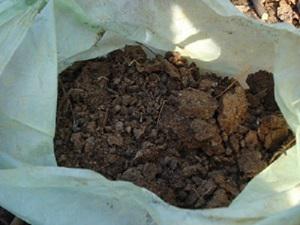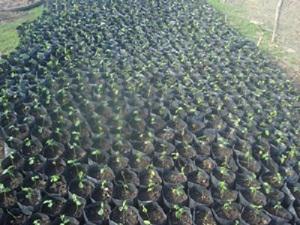The overall aim is to strengthen the community on nature conservation through awareness raising, reforestation and engaging the local community in producing compost fertilizer from water hyacinth plants.

Composting fertilizer from water Hyachinth.
The flooded forest at Tonle Sap is a marvellous habitat for fish and wildlife. The flooded forest of Tonle Sap is the main source of livelihood for the community living on its perimeter. People can generate revenue and enjoy their life. The main income of the community is the fishing, fish trading or marketing.

Flooded Forest Tree nursery.
Communities in the perimeter of Tonle Sap are poor and exploiting the flooded forest for its fuelwood, which is considered as the main source of fuel for household cooking and fish smoking as there are no alternative fuels The average fuelwood consumption for household cooking is 12-15 stere/family/year and about 5-7 stere/family/season for processing smoked fish. High fuelwood consumption is mainly due to inefficient cooking stoves and fish smoking facilities. Moreover the cause is not only human beings, but also by the unwanted floating water plant called “water hyacinth”. Millions of young seedlings from the flooded forest tree species are being smothered by the dense mats of water hyacinth. Destroying the flooded forest destruction is causing problems for fisheries related livelihoods of communities at an alarming rate which is the main concern of DATe. The destruction rate of flooded forest will exponentially affect the communities' livelihood and the environment.
The previous project in Boribo district, Kampong Chhnang province, supported by the Rufford Foundation in 2006 and 2007; had achieved positive results through transferring knowledge and skills to local communities, school children, teachers and villager. The project had developed tree nurseries, replanting and protection of the flooded forest. Moreover, the project had introduced Improved Cookstove models which can save up to 40 % fuelwood.. This project has a solid experience in working with communities in the Tonle Sap area to prevent the extinction of wildlife, rare fresh water fish, water bird and other biodiversity especially the flooded forest, caused by improper management of local communities to overexploit this limited natural resource. However, the project had faced some challenges when the outcome had quickly, and requires for the continuation of project in order to strengthen the community on nature conservation through awareness raising, reforestation and engaging the local community in producing compost fertilizer from water hyacinth plants.
The second phase project will involve 180 families, school children, teachers and authorities to develop tree nurseries and replanting trees at the community forestry site of 120 hectares of flooded forest.